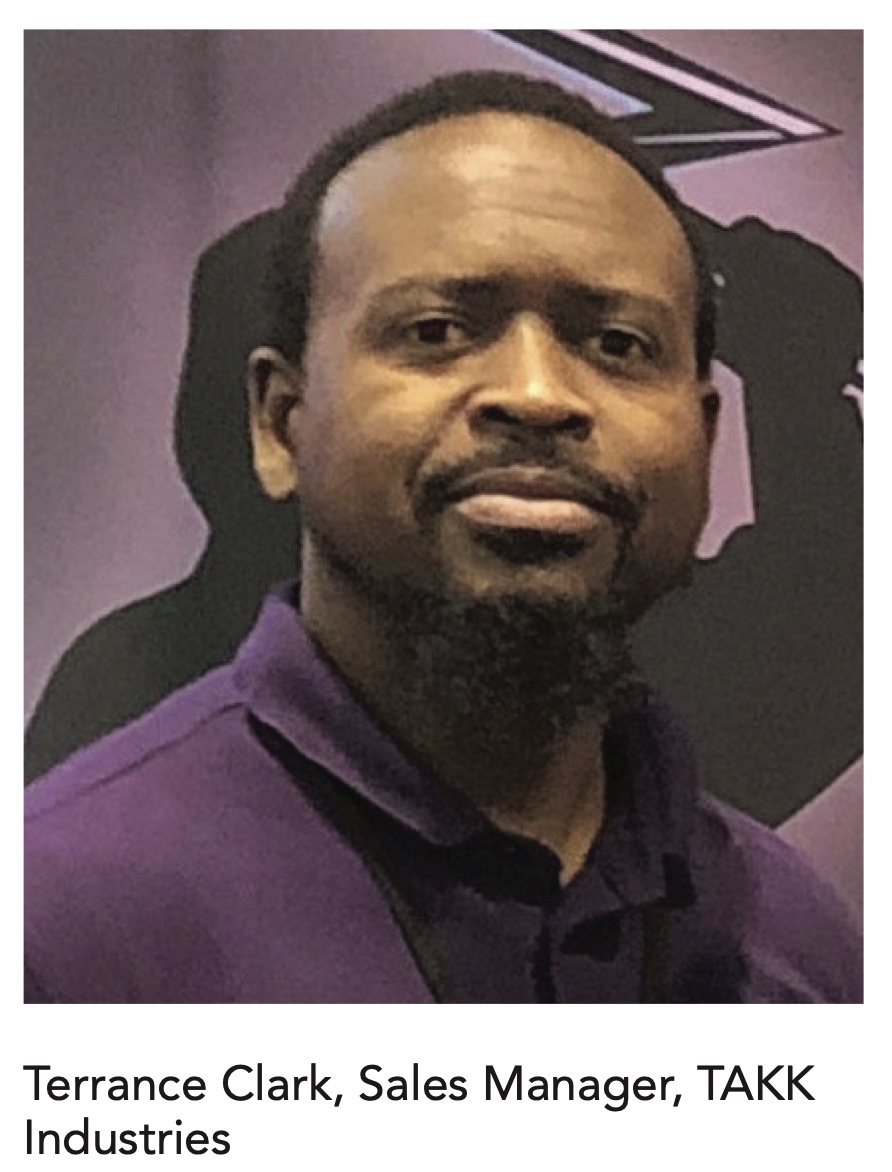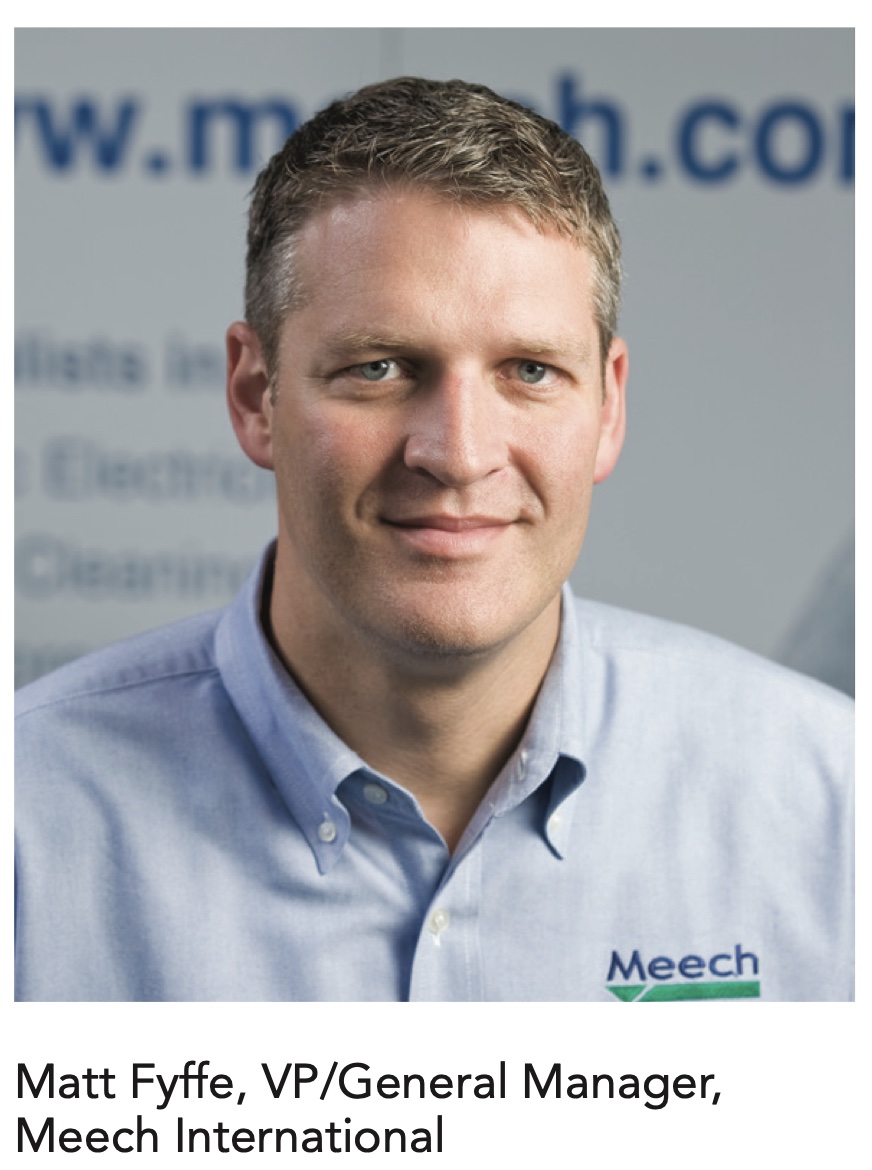A Collaborative PFFC Q&A: The Evolution of Static Control Technologies
- Published: June 26, 2023
 PFFC is most fortunate to have representatives from three leading static control companies share their thoughts and perspectives:
PFFC is most fortunate to have representatives from three leading static control companies share their thoughts and perspectives:
- Terrance Clark, Sales Manager, TAKK Industries
- Catesha Early, Application Engineer, Simco-Ion
- Matt Fyffe, VP/General Manager, Meech International
Powered static neutralizers have been available at least since 1904 when William Chapman patented a “Method of Removing Static Electricity from Papers, Yarn, & c” (US Patent 777,598, 12/13/1904). Since then, static control technology has evolved greatly and highly effective dissipaters are now commercially available. Static control technologies continue to evolve to meet customer demands and new technical challenges. Following are our expert’s thoughts and perspectives.
Over the last few years, have you noticed any changes in the needs or demands for static control? If so, what are the trends?
Clark: There have been significant changes in the needs and demands for static electricity controls. These changes can be attributed to various factors, such as the use of evolving machinery technologies, use of advanced substrates, composites, thin films and an increasing awareness of the risks associated with static electricity.
Businesses in converting, printing, packaging industries are looking for static control technologies that can be easily and economically integrated into their existing machinery while ensuring effective, reliable static control no matter the substrate, static level, distance from or speed of the process.
Further, there are also growing concerns over workplace safety including increased awareness of the hazards associated with static electricity, including fires, explosions, personal injury or discomfort from static shocks.
Several leading-edge static control solutions with “Adaptive Intelligence” for long-range and high-speed static control have been recently introduced. This technology offers the converting industry exceptional static elimination capabilities by sensing the level of static charge and, in turn, providing the appropriate level of static elimination power to neutralize the troublesome static charge.
 The demand for static control solutions continues to be driven by the challenges businesses face from the detrimental impacts of uncontrolled static electricity in terms of safety issues, product waste and stopped or slowed production resulting in loss of profit.
The demand for static control solutions continues to be driven by the challenges businesses face from the detrimental impacts of uncontrolled static electricity in terms of safety issues, product waste and stopped or slowed production resulting in loss of profit.
Fyffe: The most important trend in static control lately is the desire to remove human error and interaction from their static control solutions. They just want to “plug it and leave it.”
- Feedback Controls — Customers like that newer technologies allow users to monitor, control and adjust performance of the static control devices via a full closed loop system.
- PLC Integration — These systems are designed to harness Industry 4.0 to provide optimal ionization. This is achieved by the use of real time monitoring, data logging, and automatic adjustments through the PLC.
- Maintenance — Newer ionizing bars let operators or maintenance personnel know when bars need to be cleaned, removing the need to have them on a regular Preventative Maintenance which saves time and money.
Early: A long-term trend has been the change in attitude about operator shocks and production problems caused by static. Today, it’s very rare to find any size company that tolerates operator shocks or known production problems associated with high static charges. Once it became possible to know how well a static control device was working, the predicative element, which can then warn operators of high charges associated with operator shocks, brush discharges and line slowdowns became very important to meet customer safety and quality objectives. Thus, we have seen the demand for intelligent, consistent and reliable static control devices has steadily increased.
Fyffe: I fully expect static control devices will continue to move further away from old AC Ionizing Systems using an external high voltage power supply. The newer Pulsed DC systems have integrated power supplies and run on 24v. In most cases they are much more powerful, reliable and cost effective.
Early: I expect the shift to sustainability by converters will produce products with new static control challenges. I expect demand for the longer-lived active static devices to increase, and demand for passive eliminators, which are usually destined for the landfill after a few months service, to decline. Additionally, to deal with the production challenges associated with new sustainable products, static control systems continue to evolve, allowing for more precise charge control as well as an expansion of intelligence and communication capabilities.
 In your experience, do your customers usually identify a “point person” to handle static control issues? Do you think that this is an effective strategy?
In your experience, do your customers usually identify a “point person” to handle static control issues? Do you think that this is an effective strategy?
Fyffe: Having a “point person” is always a good idea. However, it is not really a common practice as there are multiple people in the facility that deal with the static control issues in question. They often work in different departments and have their own issues that they oversee.
However, I have seen a trend towards some of the larger multi-location facilities designating a person or team to create static control “Best Practices” throughout all the facilities. These teams already have experience in static control but then take a concentrated “deep dive” into the process and possible solutions. They are very methodical in their approach and very analytical in the solution and final analysis. They will then roll out the same proven solution across all the facilities.
Do you suggest that customers conduct annual “Static Awareness Training?” If so, what topics do you recommend that they cover?
Early: Safety of plant personnel is a top priority so effective operation of the static neutralizing system is key. This is typically conducted by the manufacturer of static control equipment. A few of the topics covered in our awareness training include:
- Provide an overview of static electricity and how it is generated;
- Cover various strategies to mitigate static; and,
- Define best practices for choosing strategic positions for active neutralizers.
Do you suggest ways for customers to track static performance in their operations? If so, in general, what instruments and procedures do you recommend?
Clark: Yes, the use of a hand-held static field meter is a valuable tool that can be used to detect static electricity in paper, film and foil converting operations. These meters, also known as electrostatic field meters, measure the electrostatic charge on a material or surface. For example, the electrostatic fieldmeters will read positive and negative charges.
In paper, film and foil converting operations, handheld field meters can be useful in identifying areas where static charges are causing issues such as defects in the final product or difficulty in handling the material. By using a handheld field meter, operators can quickly detect and quantify static charges, allowing them to make informed decisions on how to control or eliminate them.
In addition to determining location of the static controls, a handheld static meter can help determine the performance of static controls once they are installed or determine whether a particular piece of static control equipment is not working well or has failed and needs to be replaced.
 Overall, handheld field meters are a useful tool for detecting static electricity in paper, film and foil converting operations. When used correctly, they can help operators identify problem areas and take appropriate action to prevent static charges from causing issues.
Overall, handheld field meters are a useful tool for detecting static electricity in paper, film and foil converting operations. When used correctly, they can help operators identify problem areas and take appropriate action to prevent static charges from causing issues.
Fyffe: As mentioned, the newer technologies offer full closed loop performance. Sensors will read the residual charge on the web following an ionizing bar. The system will then automatically adjust the output of the ionizing bar to neutralize that charge.
This can then be taken a bit further by allowing the customer to output results via data logging. Logs can be passed on to a customer to prove the product was static-free at production time or used for internal controls. These systems are also PLC compatible.
Early: There are a few instruments used to perform static checks to verify the neutralizing system is performing effectively. These include an electrostatic fieldmeter, electrostatic voltmeter and fixed field mounted sensor. Both the handheld fieldmeter and fixed field mounted sensor detect and measure the electric field. This electrostatic field measurement is then converted to a voltage and displayed.
Use of permanently mounted sensors provides a live picture as to the charges present on the target and the effectiveness of the neutralizing system 24/7. With advancements in smart manufacturing, data is a key component to minimize downtime. This data can be fed back to a PLC which offers additional flexibility for data management. Alarms based on user-defined thresholds can trigger changes in manufacturing processes or a line shutdown if an issue is detected which could impact safety of personnel, quality of product, etc.
In summary, our experts see recent trends in static control driven by:
- Workplace safety;
- Increasing awareness of static risks;
- Reliable performance; and
- Ease of use with integrated performance monitoring.
Tracking static performance is highly recommended and common- place. We expect to see more static control devices interfaced with machine control systems in the next few years.
Once again, we thank our panelist for sharing their wisdom and insights.
For Further Information
Terrance Clark
Sales Manager
Catesha Early
Application Engineer
Matt Fyffe
VP/General Manager
This email address is being protected from spambots. You need JavaScript enabled to view it.




